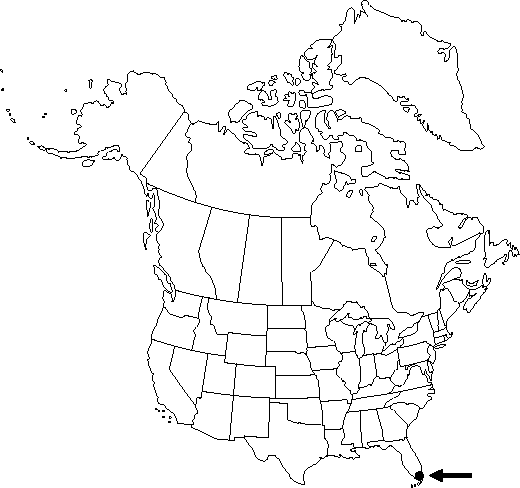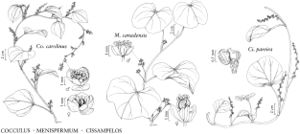Vines, from thickened root. Leaves with petiole inserted to 2 mm from margin; petiole to 7.4 cm. Leaf blade 6-12 × 7-14 cm, membranous to nearly leathery; venation 7. Staminate inflorescences not seen. Pistillate inflorescences to 13 cm; bracts sessile or shortly petiolate, usually reniform, to 5 × 6 mm, grading to minute, membranous, glabrous to densely pilose. Pistillate flowers: sepals obovate, 1.2-1.4 × 0.8-1 mm; petals 4-angulate to deltate, 0.4-0.8 × 1-1.6 mm; ovary to 0.8 mm. Drupes not seen.
Phenology: Flowering summer–winter.
Habitat: Hammocks and residential areas
Elevation: 0-10 m
Distribution

Fla., West Indies, Central America, South America, Asia, Africa, Pacific Islands.
Discussion
Only seven collections of Cissampelos pareira have been seen for North America, all from Dade County, Florida. It is odd that all of them had pistillate flowers. No fruiting material was observed. If staminate plants are present, they are yet to be collected.
Selected References
None.
